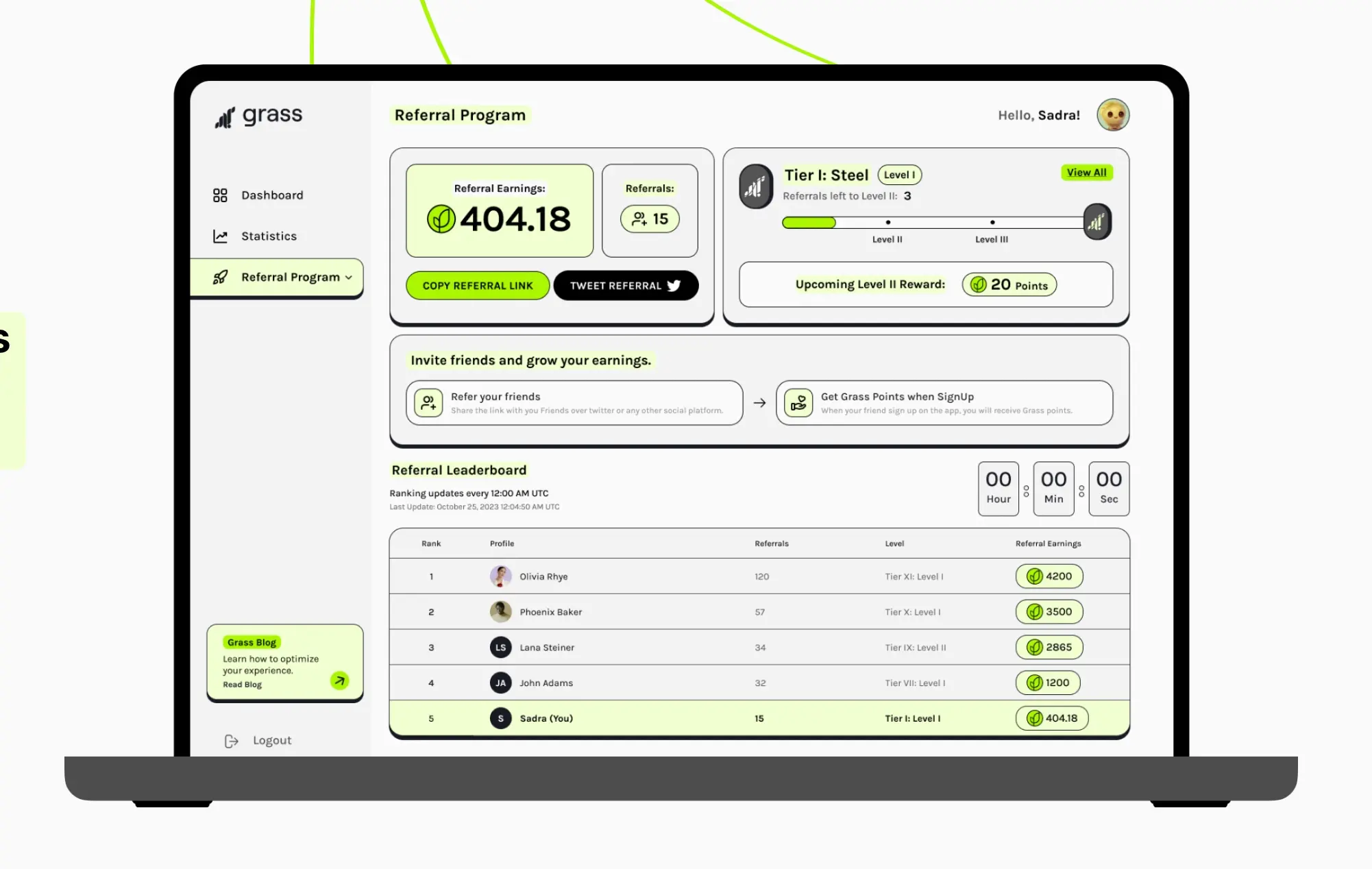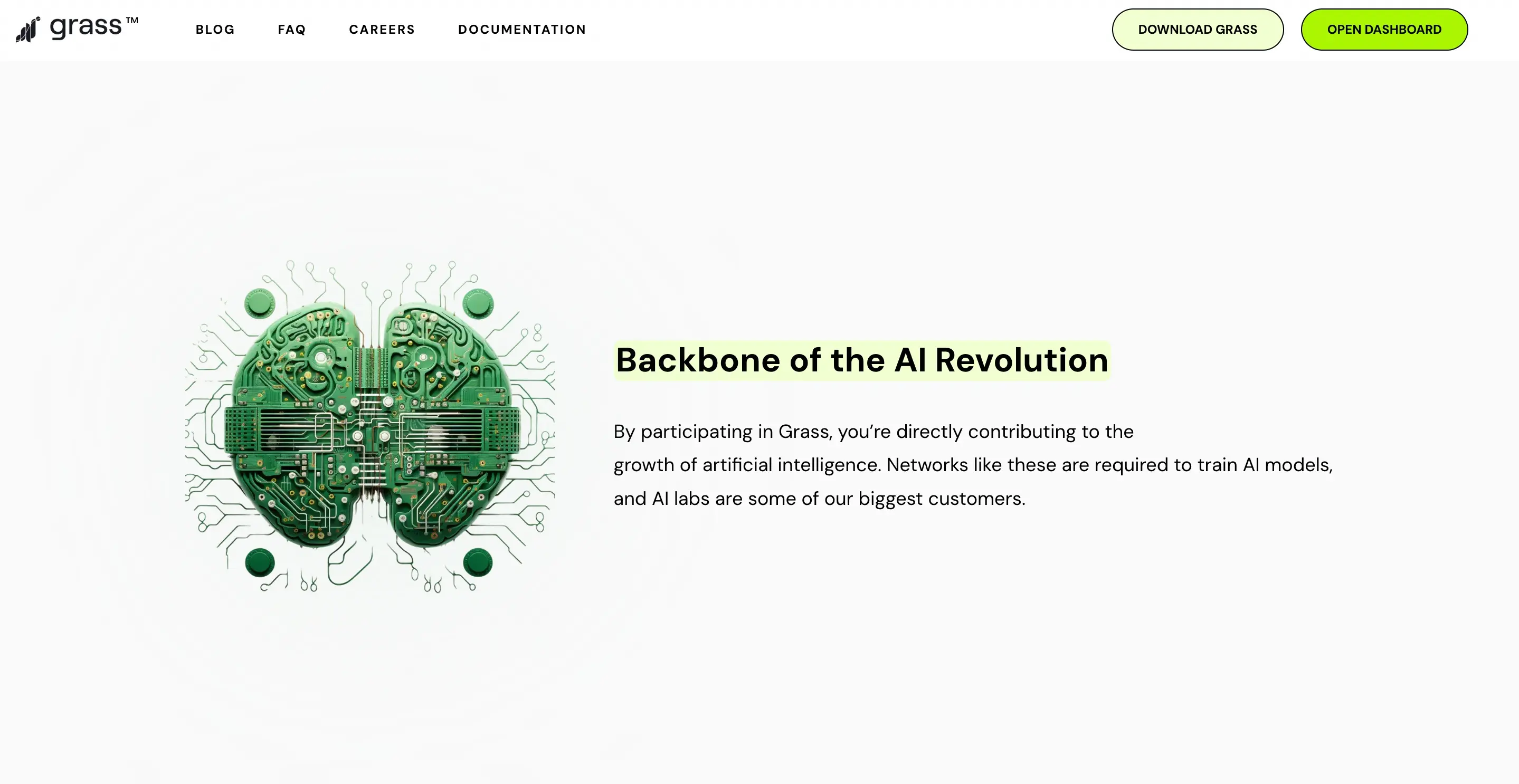AI+DePIN combination: Grass airdrop is coming soon
On August 15, Grass announced the end of its closed testing phase on the X platform and stated that it is conducting a snapshot to determine the upcoming airdrop eligibility. User network participation (weighted by epoch) will serve as the benchmark for earning rewards.
In the coming weeks, the team will provide detailed airdrop eligibility check guidelines and share more information about the tokenomics. Grass's future phase will shift from building core infrastructure to supporting large-scale development, combining user interest with network applications. This snapshot will be used to determine the upcoming airdrop eligibility, with user network participation (weighted by epoch) serving as the reward benchmark.
It is reported that Grass has reached 2 million users. As a decentralized network, Grass aims to provide the data needed for AI model training by accessing public networks. This positions Grass as a crucial component in the AI data layer, establishing its foundational status in the AI field as it expands to clean and prepare structured datasets.
01
Funding and Technical Background
The team behind Grass, Wynd Network, successfully completed a $3.5 million seed round financing led by Polychain Capital and Tribe Capital. Combined with the previous seed round pre-financing led by No Limit Holdings, Wynd's total funding has reached $4.5 million.

This round of financing was provided by companies such as Bitscale, Big Brain, Advisors Anonymous, Typhon V, and Mozaik. The funds will be strategically used to enhance Grass's technical infrastructure, expand the node network, and improve data validation processes.
Grass is a decentralized bandwidth marketplace where users can help AI labs acquire network data for training models by selling their idle internet connections. Grass utilizes users' IP addresses to sell excess bandwidth, thereby bypassing many websites' restrictions on data center IP addresses. The entire process is anonymous and 100% private, ensuring user privacy and data security.
The collected bandwidth is used to extract raw data from the internet and convert it into AI datasets. These datasets are extremely useful for AI developers and researchers who require large amounts of training data. Grass's core technology, Socrates, developed by Wynd Labs, is an AI development tool adept at collecting unstructured data from the web and structuring it for easier reading. Thus, Grass becomes an AI data repository, providing the data needed for model training to other AI systems.
Grass is the first project deployed on Solana that combines AI, Depin, and Solana technology, positioning itself as the data layer for AI.

The AI data layer is a critical starting phase in the AI development process, primarily responsible for data collection and preparation, laying the foundation for model training. In the AI field, data quality is crucial, as the model's capabilities entirely depend on the relevance and patterns within the training data. Even the most advanced AI models can yield inaccurate predictions if their training data is biased or of low quality.
Moreover, in the integration of AI and Web3, data serves as a core component, alongside computing resources, constituting key resources in AI competition. While most industry attention focuses on computing, the raw data acquisition process offers many interesting value directions, mainly including access to public internet data and protected data.
Accessing public internet data: This direction aims to build a distributed crawling network that can scrape the entire internet within days, obtaining massive datasets or accessing very specific internet data in real-time. However, scraping large datasets from the internet requires high network demand, needing at least hundreds of nodes to start meaningful work. Fortunately, Grass has already established a distributed crawling network with over 2 million nodes, actively sharing internet bandwidth with the goal of scraping the entire internet. This demonstrates the tremendous potential of economic incentives in attracting valuable resources.
Accessing protected data: Although Grass provides a fair competitive environment for public data, there remains the challenge of utilizing potential data, specifically the access to proprietary datasets. Many startups are leveraging cryptographic tools to enable AI developers to utilize the foundational data structures of proprietary datasets while keeping sensitive information private to build and fine-tune large language models.
In summary, as a representative of the AI data layer, Grass allows users to participate in the data preparation and collection process and benefit from it. This process is not only crucial for the performance of AI models but also constitutes a significant portion of the total workload involved in implementing AI systems.
02
Market Potential
Grass is built on Solana, allowing it to leverage Solana's high throughput advantages.
However, storing the provenance of each scraping task on L1 is not feasible, so Grass has built a rollup that uses ZK processors to batch process provenance proofs and then publish them to Solana. This rollup is referred to as "the data layer for AI," serving as the data ledger for all scraped data.
Grass's Web 3-first approach provides several advantages over centralized residential proxy providers. Firstly, by using rewards to encourage users to share bandwidth directly, it more fairly distributes the value generated by AI while also saving costs associated with paying application developers to bundle their code.
In terms of market potential, Grass currently has 2.2 million unique users, and more users are expected to flock in after the TGE as they realize there are no negative impacts. Additionally, the Grass network is owned and operated by its users. Users earn stakes in the network by running nodes and earning Grass points as they help operate the network. Unlike other networks, Grass aims to be a fair collective project that allows all participants to benefit, not just a privileged few.
Other market potentials include:
Grass's widespread distribution: Nodes come from over 190 countries, with 50% in the Asia-Pacific region, 40% in the US and EU, and 10% in the rest of the world.
Strong technical foundation: Processing 1 million network requests per second, scraping public data through over 2.2 million nodes globally within just a week, capable of competing with companies like Google and Microsoft.
Long project lifecycle: Grass has a robust product roadmap and has been continuously expanding.
Strong and reliable investment support: Led by Polychain and Tribe, with a luxurious lineup of investors.
Ease of participation: Running a Grass node is very simple; users just need to register and install a Chrome extension, and the application will handle the rest. This allows anyone to participate in AI development with minimal effort.
Support for decentralized and open-source AI: Grass not only aids in training traditional AI but also supports the creation of decentralized and open-source AI by creating alternative pathways to access network data. Traditionally, companies like Google and Microsoft have monopolized the indexing rights to public network data, while Grass strives to provide this service to ensure everyone can access public network data, preventing a few companies from monopolizing AI development.
If Grass's user base expands by just 20 times, it has the capability to train an AI from scratch that could replace ChatGPT, which is one of the reasons it has the potential to become a leader in the DEPIN space.
Conclusion
Grass's mission is to correct the mistakes of the Web 2.0 era and promote the development of Web3 values.
By participating in Grass, users not only earn rewards for building the network but also help create a fairer and more just world. The development of AI begins at the data layer, and Grass is committed to building the infrastructure needed for the world we want to live in.
In this process, Grass not only provides users with a way to participate in the AI revolution but also promotes the development of decentralized and open-source AI, allowing everyone to access and utilize public network data fairly. Grass's innovation and unique positioning have established it as a significant player in the AI and Web3 fields, with the potential to become a leader in this domain.










